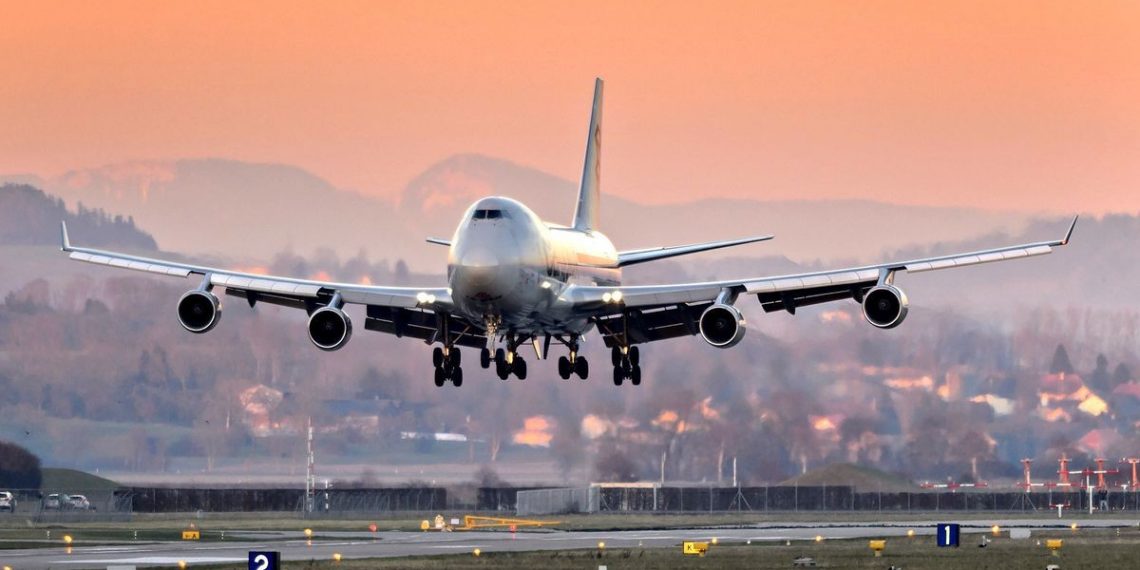Ghana’s cash crop-based economy can be transformed and moved into the bracket of developed economies if aviation is used as a catalyst for structural transformation, Ing. Leslie Alex Ayeh, President of the Ghana Institution of Engineers has said.
The country’s economy is heavily reliant on cash crops, mainly cocoa, and commodities such as gold, bauxite, and oil. A significant fall in the price of these commodities on the international market mostly derails government’s planned programmes and projects, leaving very little or no fiscal space.
Aviation, Ing. Ayeh reckons just as aviation has transformed Dubai, Singapore and other countries, Ghana could leverage same. He said improvements in the air transport infrastructure would help to raise living standards and alleviate poverty in Africa by lowering transport costs, supporting more rapid economic growth and increasing personal mobility.
Read More:
The aviation industry is particularly important for countries that adopt an outward–oriented development strategy in providing access to wider markets. “Having studied the success stories of Singapore, Ethiopia, Dubai and Morocco, there are reasonable grounds to argue that Ghana has an unexploited potential which when unleashed should make her another miracle and a talked-about Nation,” Ing. Ayeh said when delivering the 50th Presidential Address of the Institute.
The event, held virtually, was on the theme: “Aviation, A Catalyst for Structural Transformation and Sustainability Development in Ghana.” He noted that in using aviation as a vehicle for transformation, the strategy depends on the overall role of aviation as envisioned by the Government.
The role must fit into the global agenda and must fit into the international puzzle if other international players are to buy into it.
There are six choices to be made to fuel the contribution of aviation to the transformational agenda of Government and the choices are whether the Nation should be a: Tourist destination, General Aviation center, Hub, Combination of Tourism and General Aviation, Hub and General Aviation, or a Hub of General Aviation and Tourism,” he said.
Ing. Ayeh noted that currently the Ministry of Aviation has embarked on some projects which are laudable but an aggressive approach is needed. “This step taken by the ministry of aviation is a good approach. However, Ghana still has a lot of potential and an aggressive posture would leap frog Ghana into a center of excellence in the aviation industry.”
Ethiopia’s example
Air transport services directly contribute more than US$2 billion annually to the Ethiopian economy. According to Ing. Ayeh, Ethiopia’s success story can be drawn from two main sources: Geographical Positioning and Human Capital Development and Strong Managerial and Operational Practices.
Geographical positioning of Ethiopia makes it an obvious choice as a gateway between Africa, Middle East and Asia. Addis Ababa is also a home for two major organizations namely the Africa Union and ECA. These organizations employ approximately 2,500 people excluding their families. As a result, Addis has also become a major conference tourist center.
Ethiopia also capitalizes on Africa being home to the fast growing population and economies to invest in Human Capital by investing in Aviation Academy and its strict
adherence to international standards makes it an obvious destination for many countries.
Singapore as a logistics hub
When it gained independence in 1965, Singapore was a low income country with limited natural resources that lacked basic infrastructure, investment and jobs. Singapore has become one of Asia’s wealthiest Nations, due largely to its emergence as the highest-performing logistics hub in the region.
“In the aviation sector, there are plans to double the capacity of the airport. Air cargo is encouraged to use Singapore via specialized infrastructure and processes. There is the Airport Logistics Park for time-sensitive cargo, the cold-chain centers for perishables, and regional express facilities to accommodate burgeoning ecommerce activity. Staff are also provided with regular training to ensure they can keep up with the new technologies and have the right skills to process different cargo types. For example, one of the airport’s cold-chain centers was the first in the world to be awarded the IATA CEIV Pharma Certification for handling pharmaceutical cargo,” he said.
The numbers speak for themselves. Today, the small citystate is home to the world’s largest transshipment container port, linked to over 600 ports worldwide. Singapore Changi airport is voted the best internationally, and is served by about 6,800 weekly flights to 330 cities. Finally, the island Nation’s trade value amounts to 3.5 times its GDP. Singapore’s achievements did not happen by chance.
The making of Dubai For much of this period, there was next to nothing in terms of airconditioning, buses, trains, mega freeways, high-rises, even hotels – in Dubai. Electricity was unreliable. In 1970, a year before the UAE became a federation, Sheikh Rashid ordered the construction of a new terminal building consisting of a 110 metre three-storey building, and included an enclosed floor area of 13,400 square meters.
A new 28-metre control tower was also built. It was considered a grand infrastructure project for Dubai’s stature — with only one runway, and having no airline of its
own at that time. It took another 15 years before Emirates Airline was launched with US$10 million in capital, starting with two aircraft it had leased from Pakistan International Airlines (PIA).
In 2014, Dubai overtook Heathrow Airport as the world’s busiest International Hub, with 70.48 million passengers and 8,000 weekly international flights. Dubai
has managed to keep that position to this day.
Today, the Dubai International Airport (DXB) is the gleaming Aviation Hub of the Region, with more than 1,100 aircraft movements of International flights each day.

